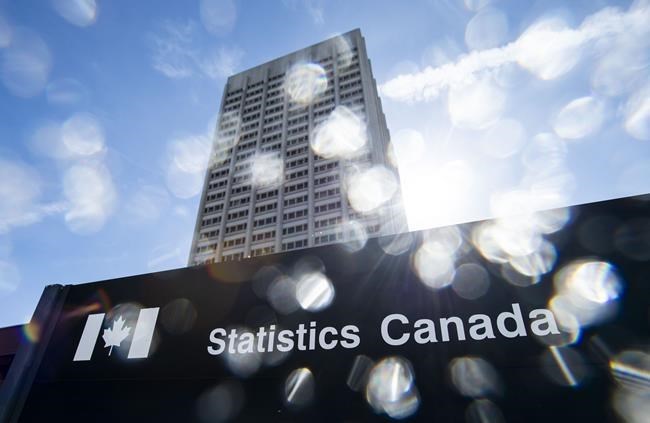OTTAWA — The Canadian economy appears to have suffered its worst two-month stretch since the great plunge it took just over a year ago, as Statistics Canada reported a decline in real gross domestic product for April and foresees a similar drop in May.
Statistics Canada said Wednesday real gross domestic product fell 0.3 per cent in April, which was better than an initial estimate a few weeks ago of a drop of 0.8 per cent. It was the first decline in real GDP since April 2020 during the first wave of the pandemic.
The agency also said its preliminary estimate for May showed a similar drop of 0.3 per cent as many restrictions remained in place through the month as the country grappled with the third wave of the COVID-19 pandemic.
The overall decline in April, as well as the early estimate for May, put overall economic activity about one per cent below pre-pandemic levels seen in February 2020.
Attention will now turn to June as experts expect a consumer-led recovery with vaccination rates on the rise and restrictions rolling back, which should fuel job growth and reduce health concerns.
"The ingredients that support consumer spending are all lining up," said Deloitte Canada chief economist Craig Alexander.
"It isn't going to go back to pre-COVID levels, but the direction of growth is going to be unambiguously positive. I firmly believe that by the end of the year, I won't be able to get a reservation at a restaurant because people are going to want to reconnect."
In Alexander's latest forecast, spending on durable goods grows by 13.4 per cent this year, which he said is already pretty much in the books from strong gains in the first half of 2021. He said tempering annual growth is an expected spending shift to service-sector activities in the second half.
Card-transaction data suggests service-sector spending is on the rise for retail and restaurants, and some early signs of dollars flowing into the travel sector, said RBC senior economist Nathan Janzen.
"The backward-looking data for April and May still looks soft, as would be fully expected, but there's a more optimistic story for June and the summer that's already in place," he said.
CIBC senior economist Royce Mendes said indications now suggest that annualized growth in the second quarter should at least hit two per cent, compared with the no-growth scenario many experts had previously expected.
Driving the decline in April was a 5.5 per cent drop in the retail sector after two months of increases, including a strong March where retail sales hit $55.3 billion, a year-over-year increase of 26.7 per cent. Manufacturing fell one per cent in April after growth in March of 1.5 per cent.
Statistics Canada also noted the real estate sector contracted 0.7 per cent in April, its first drop since October 2020, as home sales slowed in Canada's major urban centres. As well, accommodation and food services declined 4.6 per cent.
There were some silver linings, though.
Despite travel restrictions, accommodation services rose 0.5 per cent in April as Statistics Canada noted more Canadians opted to go camping.
The overall picture was of an economy that has adapted where able to restrictions, such as online shopping and curbside pickup, but one whose trajectory is still tied to path of the pandemic.
One pothole in that path is the virus's more contagious Delta variant.
TD senior economist Sri Thanabalasingam said companies could face tighter restrictions if the variant picks up steam and case counts and hospitalizations rise. That would weigh on economic activity and slow the recovery, he said.
He added the variant poses a similar risk to the pace of the recovery in countries like the United States that would dampens demand for Canadian exports.
"Even though domestically we might be a little bit more inoculated from the impacts of the variant because of our impressive vaccination take-up, it really is a global challenge that has to be overcome for Canada to really get back to its full economic capacity," he said.
This report by The Canadian Press was first published June 30, 2021.
Jordan Press, The Canadian Press



